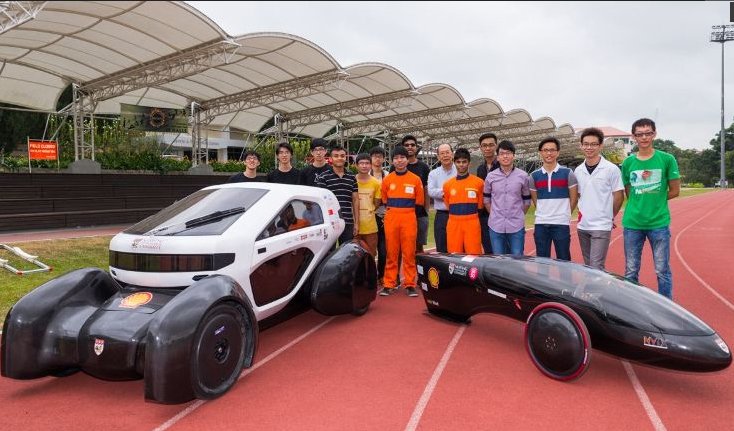
According to a statement issued by the university, the car named NTU Venture (NV) 8, is mounted on a 3D-printed carbon fibre single-shell chassis and will participated in Shell Eco-marathon Asia under Urban Concept category this year.
NTU students have also built a slick three-wheeled racer NTU Venture (NV) 9. NV-9 is capable of taking sharp corners with little loss in speed due to its unique tilting ability inspired by motorcycle racing.
Made from hand-made silicon solar cells, the NV-9 will compete as a prototype at the Shell Eco-marathon Asia, scheduled to be take place in Manila from February 26 to March 1.
The cars have been designed and built from the scratch by the NTU undergraduates in just over a year. The eco-cars aim to attain the highest fuel efficiency.
NTU students have also built the NTU Venture (NV) 9, a slick three-wheeled racer which can take sharp corners with little loss in speed due to its unique tilting ability inspired by motorcycle racing.
NV9, featuring hand-made silicon solar cells, will be NTU’s entry in the Prototype category at the Shell Eco-marathon Asia which will take place in Manila from 26 Feb to 1 March.
Designed from scratch by NTU undergraduates and built over a year, these two eco-cars will aim to attain the highest fuel efficiency.
The students used the latest engineering techniques to develop innovations such as silicon solar cells that can be contoured to follow the car's shape.
“Using the latest engineering techniques learnt from their studies in NTU, the students have developed innovations such as silicon solar cells that can be contoured to follow the car’s shape. This allows for maximum harvesting of the solar energy and a tilting mechanism in NV9 that can ‘lean’ in the direction of the turn to avoid losing speed,” said Associate Professor Ng Heong Wah.
Ilmi Bin Abdul Wahab, an undergrad computer engineering student who led the development of 3D-printed NV8 said, “We decided to go with a 3D-printed cabin made from lightweight plastic, as we wanted to maximise the internal space and driver’s comfort while still being able to keeping the weight to a minimum.”

1721377568-0/BeFunky-collage-(18)1721377568-0-165x106.webp)





















COMMENTS
Comments are moderated and generally will be posted if they are on-topic and not abusive.
For more information, please see our Comments FAQ